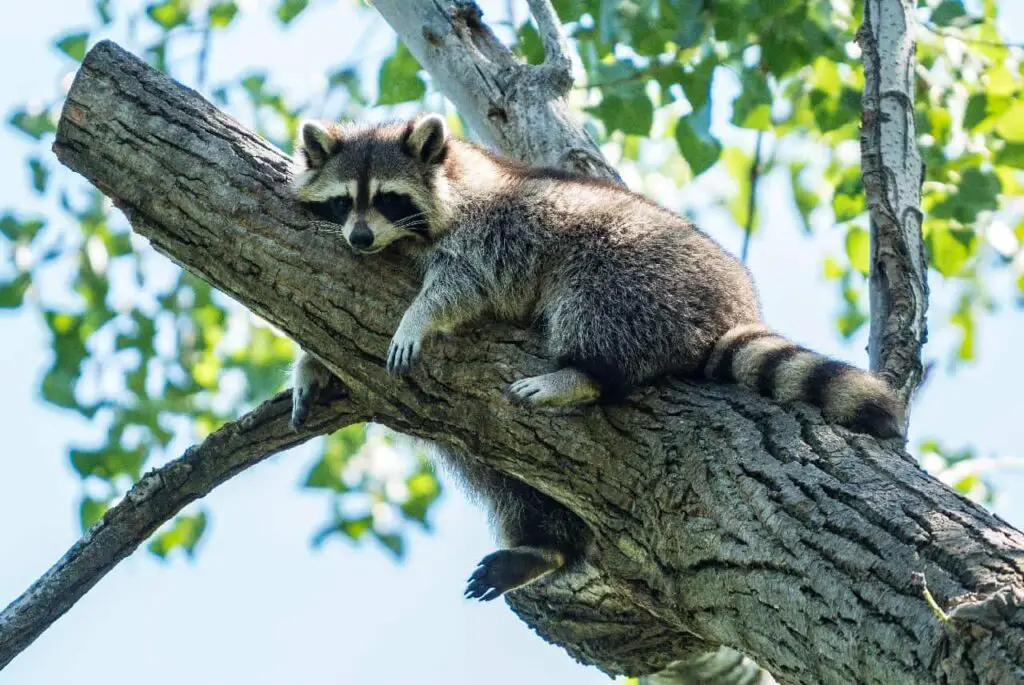
Both foxes and raccoons can be found in the wild and urban environments all over North America and other countries worldwide. I have often wondered what some of their similarities might be and how they might differ. It turns out there is lots of information on the topic, so what differences and similarities are there between foxes and raccoons?
Foxes are nocturnal, social creatures; fur color ranges from white, red, orange, and black to silver, with bushy tails. Raccoons are nocturnal, antisocial creatures with a mixture of brown, grey, and black fur, striped tail with mask-like markings around their eyes. Both animals are omnivorous.
Foxes and raccoons share some fundamental differences and some interesting similarities. There are many other aspects of these animals’ lives that might be just as interesting, so let’s take a closer look at foxes vs. raccoons.
Table of Contents
- Fox vs. Raccoon: What are the Physical Differences?
- Fox vs. Raccoon: What are the Differences in Size?
- Fox vs. Raccoons: How Do their Habitats Differ?
- Fox vs. Raccoon: How Do their Diets Differ?
- Fox vs. Raccoon: What are their Different Habits?
- Fox vs. Raccoon: How Do they Raise their Young?
- Conclusion
Fox vs. Raccoon: What are the Physical Differences?
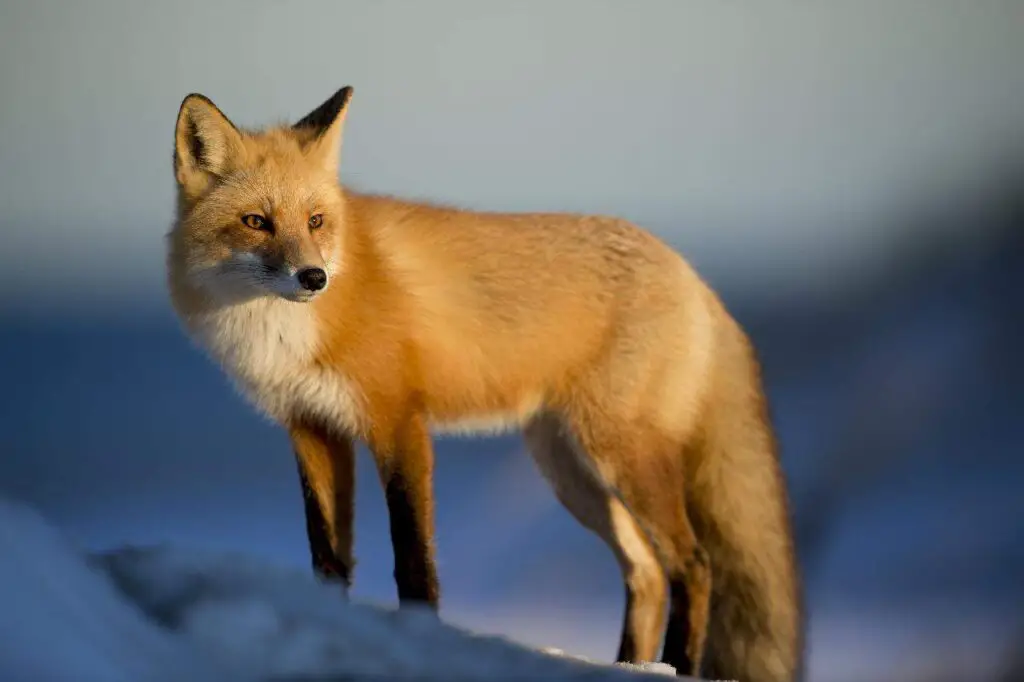
Foxes have triangular snouts, flattened skulls, and fluffy tails. Their fur comes in many colors; for example, the Arctic fox is either white or blue morph, changing color with the seasons. The white morph is gray or brown in the summer months, turning white to match the snow in winter.
The blue morph is brown or dark grey all year long.
Red foxes are considered the most common fox, coming in many colors, including black, silver, and orange or a mixture of all three. Humans have also bred foxes to get the color variations they want in their fur, including white with black or grey streaks, red and black patches, and pink noses with peachy-white fur.
The raccoon’s most characteristic feature is their face mask, black fur covering their eyes. These markings have been hypothesized to help them see in the dark, reducing glare and enhancing their night vision. Raccoons have grayish-brown fur, of which almost 90% is dense underfur, insulating them against the cold.
It has eight dark and light rings which alternate down its tail.
Raccoons’ front legs are shorter than their back, giving them the appearance of being hunched when walking or running. Their five toes on the front paws, which are similar to fingers, allow them to manipulate and grasp food and a variety of other objects. Their front paws are sensitive, especially underwater.
Fox vs. Raccoon: What are the Differences in Size?
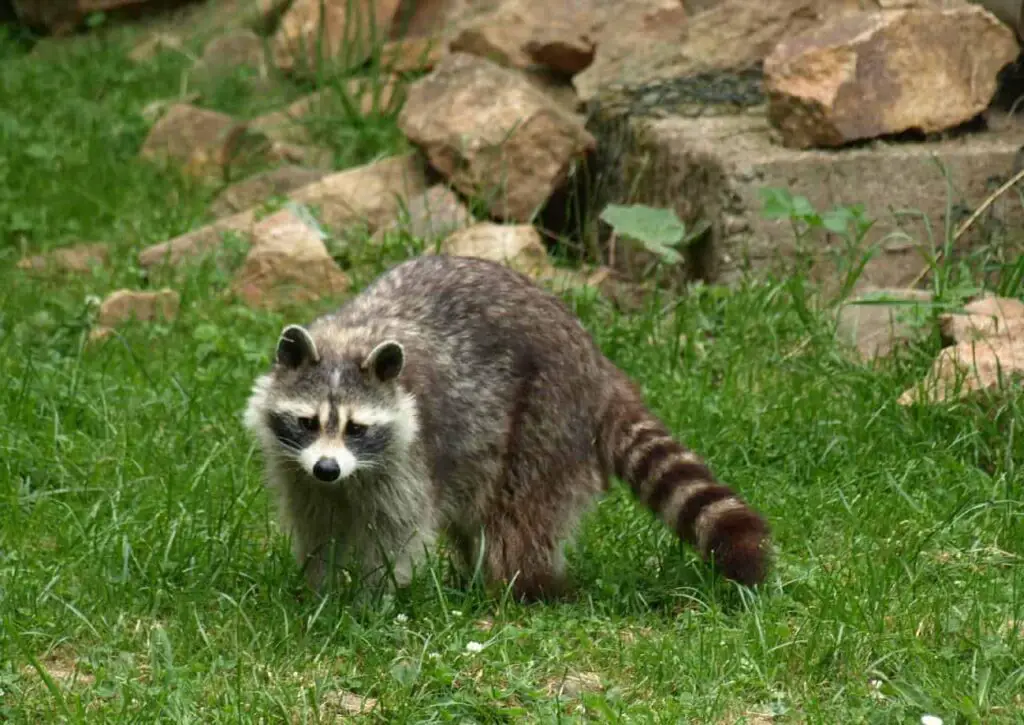
Foxes are typically the size of a medium-sized dog, but as they are smaller mammals, they are typically relatively light. Their weight varies from 1.5 lbs. to 24 lbs. The fennec fox, the smallest living fox, weighs between 2.2 – 3.3 lbs. measuring only 9 inches in length.
Other species of fox can grow up to 34 inches from their heads to their flanks, tails often adding 12 – 22 inches to their length.
On the other hand, raccoons are only as big as small dogs, but they are the largest member of the Procyonidae family. They weigh around 4 – 23 lbs. and grow to be about 23 – 37 inches long. Their weight is also dependent on available food and their habitat. The female raccoon is slightly smaller than the male.
Fox vs. Raccoons: How Do their Habitats Differ?
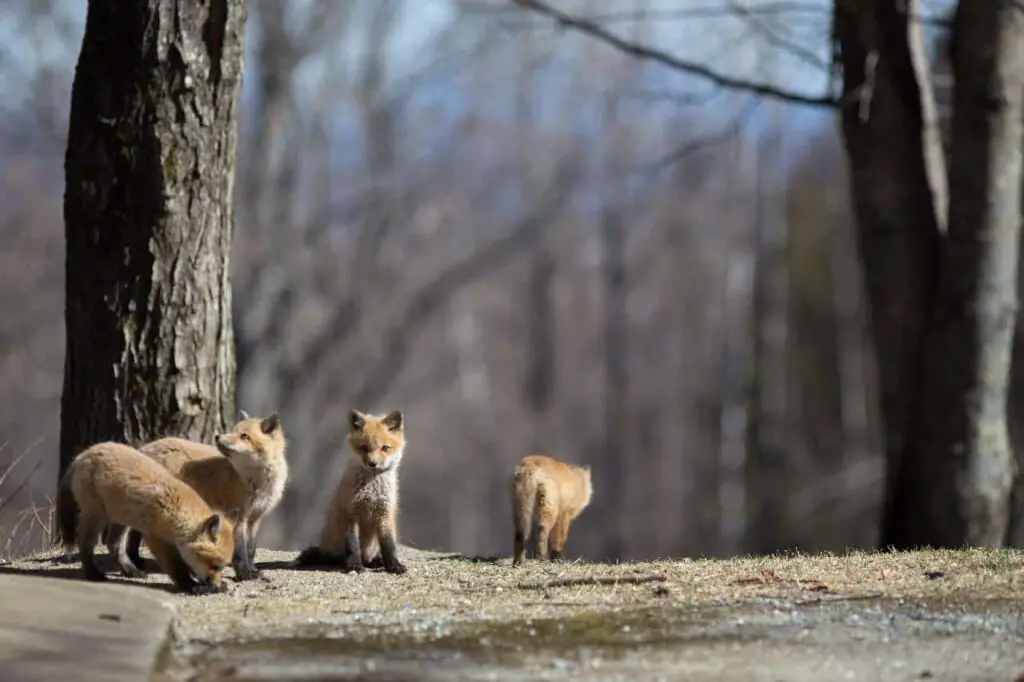
You can find foxes living worldwide in North Africa, Asia, North America, and Europe, living in a wide range of different terrains. They prefer to live in forested areas, but they will also live in deserts or grassland areas. They make burrows or dens where they sleep, store food and raise their pups.
These burrows will often have many different exits and entrances and are made large enough for the fox and its whole family.
Raccoons live primarily in North and Central America. During the 20th century, humans introduced them to parts of Europe, including Russia, Germany, and Japan. Raccoons like to make their homes or dens in caves or trees but will happily set up house in abandoned vehicles, barns, or other human-made locations.
Fox vs. Raccoon: How Do their Diets Differ?
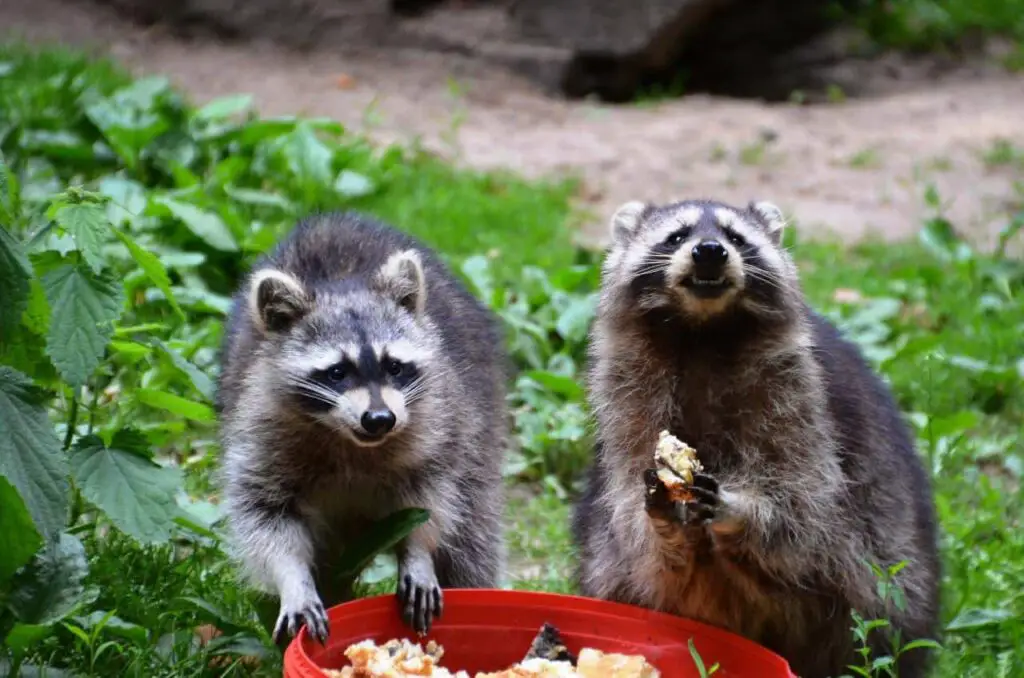
Foxes are omnivores and will eat a large variety of foods, including birds, bugs, fruit, small animals, lizards, rats, voles, mice, hares, and rabbits. If they live near the ocean, they will add crabs and fish to their diet. They also have no compunction about raiding trash cans for scraps. What they don’t eat, they will often store in a safe place for later.
Raccoons are also omnivorous and will happily eat both meat and vegetation. Their diets primarily include fruits such as berries, apples, peaches, plums, citrus fruits, figs, wild grapes, etc. When it comes to their meat diet, raccoons prefer to eat invertebrates rather than vertebrates; typically eating frogs, crayfish, fish, rodents, insects, and bird eggs.
They are also not above scavenging in trash cans and eating some roadkill.
Fox vs. Raccoon: What are their Different Habits?
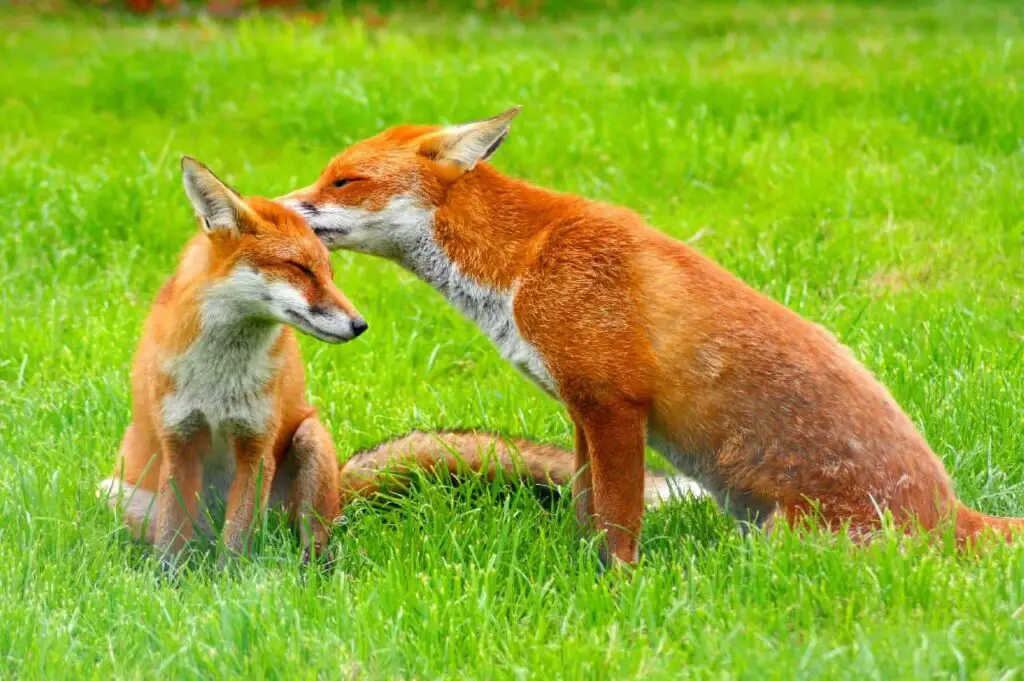
Foxes are very social creatures and live in packs, preferring to stay close to their family members. Foxes are typically monogamous, with one male having up to seven mates. The male and his mates will live in the same den. Female foxes will often take on a non-breeding female as a nanny to their pups.
Foxes mostly sleep during the day and hunt at night, but this can change depending on if they feel safe enough where they live to hunt during the day. Foxes have excellent eyesight and hearing and are very fast, running as fast as 45 mph. They can also distinguish between other foxes’ voices, being able to tell one voice from another.
Raccoons, on the other hand, are not very social creatures. However, recent studies have shown that there is evidence raccoons often congregate in gender-specific groups. Raccoons can reach a speed of 15 mph when running and can fall distances of 35 – 40 feet without injuring themselves.
Raccoons will sleep during the day and hunt or scavenge during the night. In the winter months, they will sleep more, living off stored fat, but they do not hibernate in the traditional sense. It has been recorded that they can lose up to 50% of their body weight during the winter.
Fox vs. Raccoon: How Do they Raise their Young?
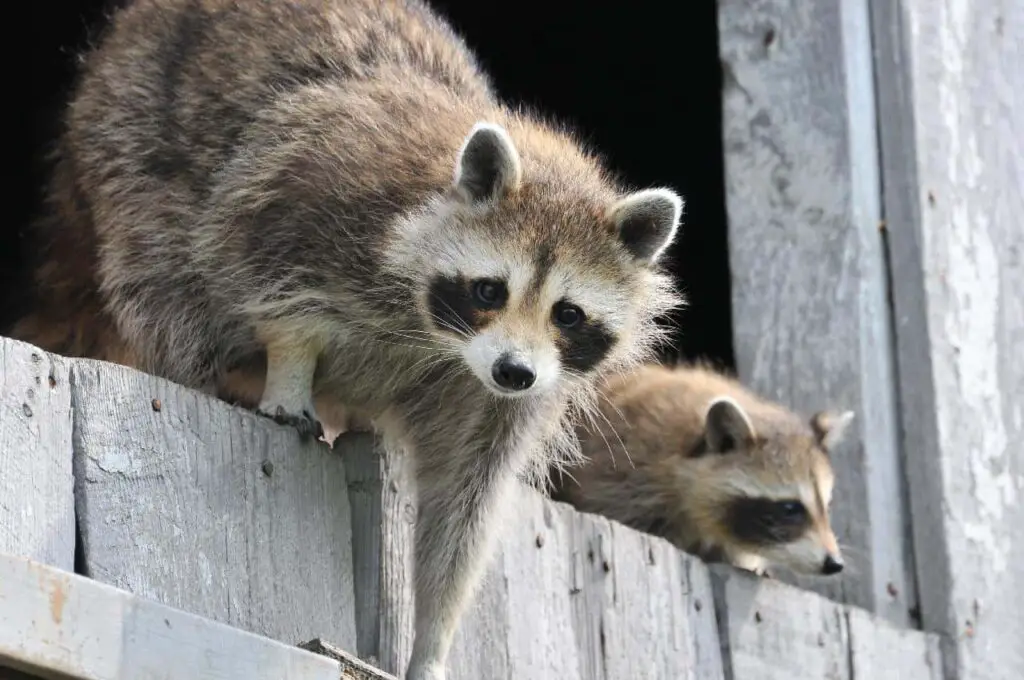
After mating, a female fox will make a nest out of leaves in her den. This leafed-out area is called the nesting chamber, and it is here that she births her pups. Foxes have litters of 2 – 7 pups, and caring for pups is a family affair.
Both parents will care for the pups, and often even older siblings will help by bringing them food. Foxes in the wild often only live till they are about 3 years old. Records show that in captivity, foxes can live up to 10 – 12 years.
The mother raccoon will typically separate from other raccoons to raise her young alone, with the male absent from baby duty. Baby raccoons are called cubs or kits and are typically born in early summer. A mother raccoon will typically have 1 – 7 kits. A mother and her kits together are called a nursery.
Kits will spend the first two months living in the den, and at 7 – 16 weeks, the mother will ween them. Around 12 weeks of age, they will begin roaming away from their mother, often staying away whole nights. Between 8 – 12 months they, become entirely independent and leave their mother for good around 13 – 14 months old.
In the wild, raccoons will live around 2 – 3 years and up to 20 years in captivity.
Conclusion
Foxes and raccoons share some interesting similarities, such as being nocturnal, omnivorous. Both are mammals and happy to scavenge in your trash, but the similarities end there. Overall, foxes and raccoons are inherently different creatures, ranging from their physical appearance to their social interactions with members of their species.
References:
PBS: Raccoon Facts
Live Science: Foxes: Facts & Pictures
Live Science: Facts About Raccoons
WikiDiff: Fox vs Raccoon – What’s the difference?
Britannica: procyonid
The Newtown Bee: Coexisting In Harmony With Wildlife: Foxes, Raccoons, And Rabbits
247Sports: Fox & Raccoon who wins

